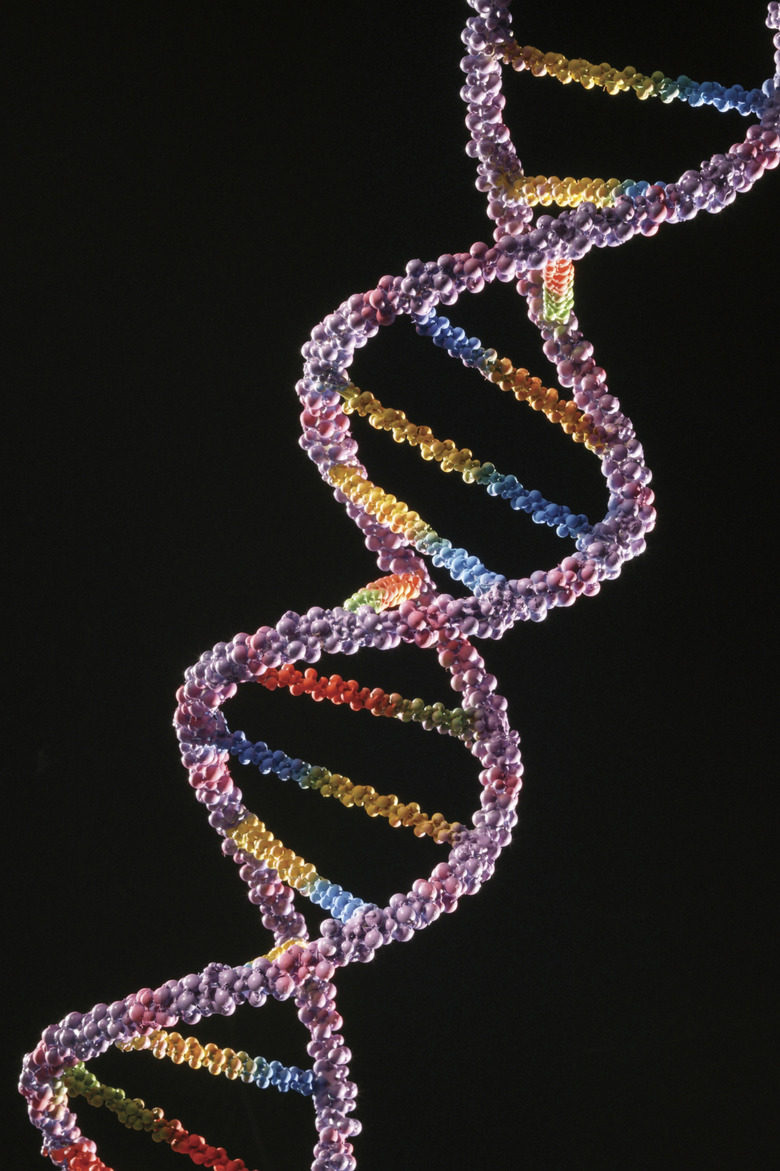Section Of DNA Or RNA That Does Not Code For Proteins
While most DNA definitions list is as the genetic material that codes for the information that leads to protein synthesis, the fact is that not all DNA codes for proteins. The human genome contains a lot of DNA that does not code for protein or for anything at all.
Much of this non-coding DNA is involved with regulating which genes are turned on or off. There are also several types of non-coding RNA, some of which aid in protein production and some that inhibit it. Although non-coding DNA and RNA strands do not directly code for protein to be made, they often serve to regulate which genes are made into protein in many cases.
Gene Components
Gene Components
A gene is a portion of the DNA within a chromosome that contains all the necessary information for making RNA and then protein. The region of a gene that codes for protein and will be made into RNA is called the open reading frame, or ORF. The ability of the ORF to make RNA and then protein is controlled by a section of DNA called the regulatory region.
This region of the DNA is very important in controlling which genes are turned on and eventually made into protein, but does not code for any protein itself.
Non-Coding RNA
Non-Coding RNA
Many sections of DNA code for components of RNA machinery used for transcription and translation. These components aren't always proteins. In fact, many are made solely of pieces of RNA like tRNA and mRNA.
There are also several types of RNA, most of which do not code for protein. Ribosomal RNA codes only for production of the ribosome, the complex which turns RNA into protein. Transfer RNA is important for making the protein from RNA, but does not code for making protein itself.
Micro RNA, or miRNA, prevents protein from being made by targeting the coding RNA to be degraded. The miRNA serves to negatively regulate which genes are turned into protein, essentially turning the genes off. This process of turning off genes with miRNA is known as RNA interference.
Gene Splicing
Gene Splicing
When a gene is transcribed from DNA to RNA, the resultant coding RNA, or mRNA, requires further processing before it can be made into protein. The mRNA is composed of sequences known as introns and exons. The introns do not code for any protein and are removed from the mRNA before it is made into protein. The exons are the sequences that code for protein.
However, some exons are removed from the mRNA as well and do not get made into protein. This process of removing introns and exons from RNA is known as gene splicing. Sometimes these exons are spliced out of the sequence during protein production, and other times those exons are included. This will depend on which protein is being coded for.
Junk DNA
Junk DNA
Some DNA has no known purpose and is therefore referred to as junk DNA. Junk DNA is commonly found in the telomeres — the ends of the chromosomes. The telomeres of chromosomes are slightly shortened with each cell division, and over time, a significant amount of the DNA from the telomeres can be lost. It is thought that the telomeres are made of mostly junk DNA so that no important genetic information is lost when the telomeres are shortened.
Another factor to keep in mind is that just because there is no known function in this "junk" DNA doesn't mean that it really is junk. The function of these sections of DNA may simply be unknown at this time or be too complex for our understanding and our current technology.
Cite This Article
MLA
Thompson, Noelle. "Section Of DNA Or RNA That Does Not Code For Proteins" sciencing.com, https://www.sciencing.com/section-dna-rna-not-code-proteins-3523/. 30 July 2019.
APA
Thompson, Noelle. (2019, July 30). Section Of DNA Or RNA That Does Not Code For Proteins. sciencing.com. Retrieved from https://www.sciencing.com/section-dna-rna-not-code-proteins-3523/
Chicago
Thompson, Noelle. Section Of DNA Or RNA That Does Not Code For Proteins last modified August 30, 2022. https://www.sciencing.com/section-dna-rna-not-code-proteins-3523/
